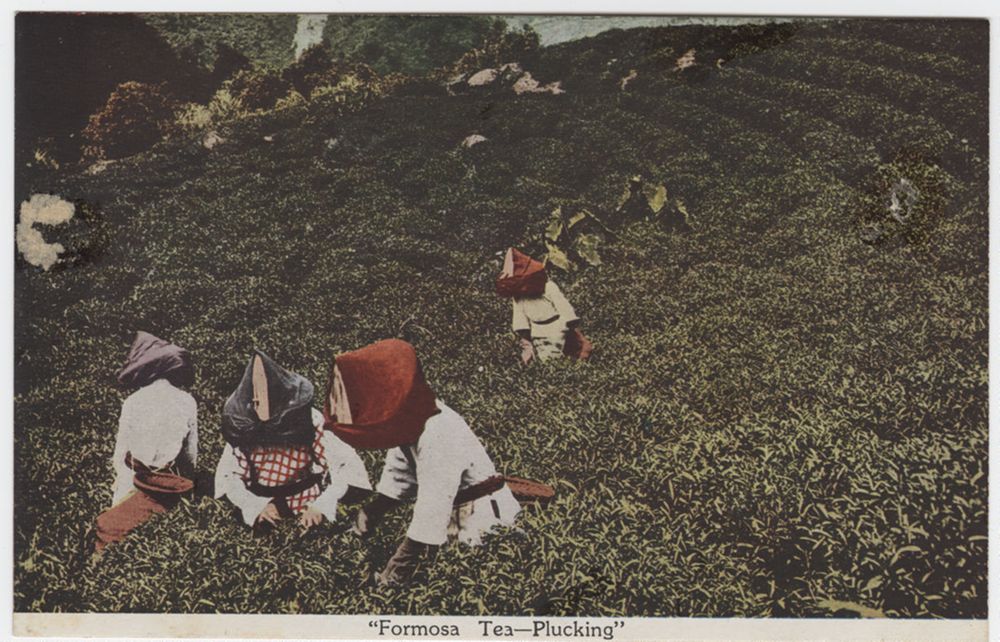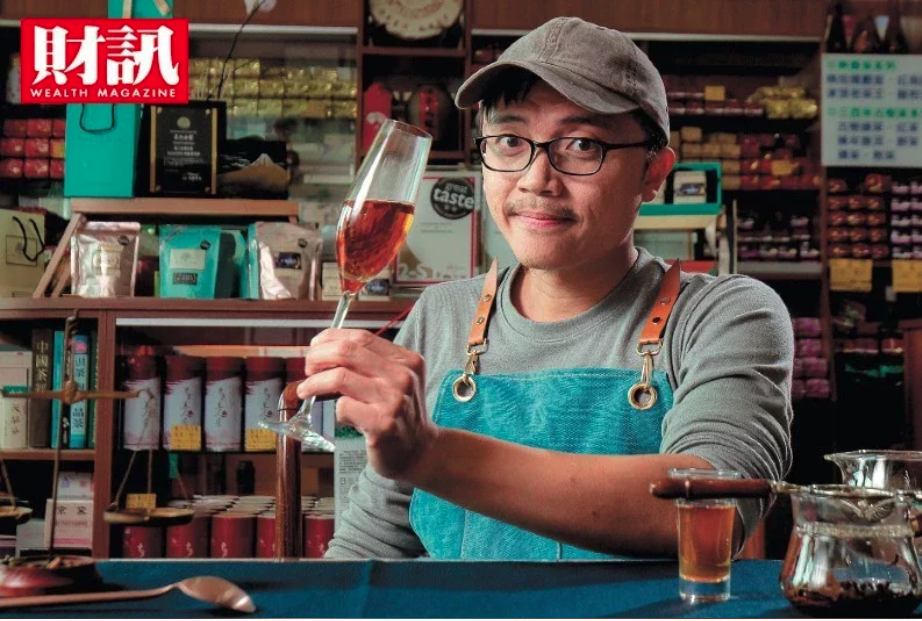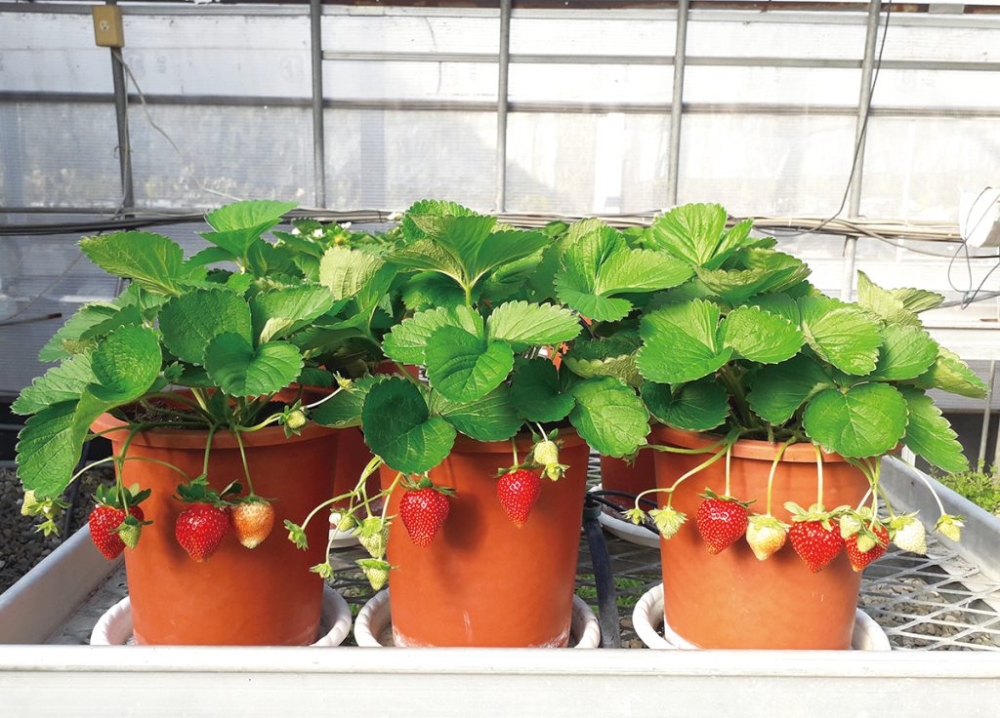History of Tea in Taiwan: from Wild Inner Mountain to Export Tea Garden
"Tea" is a drink made from the leaves of "tea tree". It is not clear whether "Camellia sinensis" originated in China, but tea culture originated in China.
Chinese people have known how to drink tea for a long time. Tea was originally a medicine, but later it became a drink. Tea drinking has been popular in China since the Tang Dynasty, when Lu Yu, a tea scientist, wrote the world's first special book on tea, the Book of Tea. Since ancient times, China has developed the culture of growing, making and drinking tea. There are four major tea-producing areas: the South, the Southwest, the South and the North of the Yangtze River. The climate in the south-central region is the most suitable for the growth of tea trees, especially in many hills in Fujian, which has become an important tea-producing area in China.
In the mid-19th century, before the British began to grow large quantities of tea in Assam and Darjeeling in northeastern India, Chinese tea dominated the world market, especially among the upper class in Europe and the United States.

When did Taiwan start growing tea? It is generally said that it began at the end of the 18th century and the beginning of the 19th century, when Fujian immigrants introduced tea trees from their hometown and planted them in the hills of the Tamsui River in northern Taiwan. However, according to Taiwan's folk contract documents, there were "tea gardens" and "tea bushes" projects in the 1770s.
In addition, during the Dutch era, Taiwan also had a record of growing tea. From this point of view, Taiwan should have a history of growing tea for more than 3 to 400 years. It is generally believed that Taiwan tea species are introduced from China. In fact, there are wild tea trees in the mountains of Taiwan, but because it is not easy to make tea, the output is very small.
Water and sand even produced good tea since ancient times? Wild tea trees in Taiwan
According to the records of the Dutch "Batavia City Journal" from 1644 to 1645, the discovery of "tea trees" (modern Dutch Theebomkens) in Taiwan may be the earliest record of wild tea trees in Taiwan. According to the literature of the Qing Dynasty in Taiwan, the wild tea trees in Taiwan all said that in the mountainous areas of "Shuishalian", Shuishalian refers to the area of Yuchi Township and Puli Town with Sun Moon Lake as the center.
Dutch literature records that the Chinese have entered Lamtau, Paktau, and Serrien. From this point of view, the Taiwan tea trees mentioned in the Badavia City Journal do not rule out that they are wild tea trees in Shuishalian.
The Chronicles of Zhuo County in the Qing Dynasty (1717) said: "the mountain tea in Shuishalian is very good, and its taste is as green as pineapple. The valley is deep and cold, but the summer heat dissipates the swelling. However, the road is dangerous, and afraid of life, so the Han people do not dare to enter the tea, and do not know the method of making tea. If you blackmail those who can make all kinds of Wuyi products and buy them and build them, it will be of great benefit to the fragrance. " [3]
According to the literature of the 18th century and other Qing dynasties, Chinese immigrants in Taiwan knew for a long time that wild camellia existed in Taiwan, and then they baked wild camellia, and they also understood the taste, nature, and efficacy of camellia, and said it was considered a good tea.
Qing Zhu Shifu's Annals of Xiaoliuqiu (1765) mentioned "Shuishalian Tea": "Shuishalian Mountain is in Zhuluo County, and there are ten cooperatives." Tea in Neishan is a good company. VANCL Fuzhou City, the city people immediately ask for water salian tea, in order to cure red and white dysentery such as God. " Zangen in the Qing Dynasty (1891) also talked about "Shuishalian tea": "only extremely cold, the treatment of fever is the most effective, can cause acne."
From this point of view, Taiwan wild camellia was baked in the Qing Dynasty, but its output was limited, so people in Fuzhou often asked for water salian tea when they came from Taiwan, so that it could treat "red and white dysentery" (traditional Chinese medicine refers to purulent blood in the stool). In addition, wild camellia in Taiwan can dispel heat and poison and eliminate acne because of its extremely cold nature. Today, Camellia sinensis f wild camellia has been confirmed to be a native species of Taiwan and was renamed "Taiwan Camellia" (Taiwan Camellia) in 2009. Formosana.
According to the official website of the Forestry Experimental Institute of the Council of Agriculture, Taiwan Camellia belongs to Theaceae and Camellia is an evergreen small tree with large leaves, which can be up to 8 meters high and can be over 100 years old. it is mainly distributed in the mountainous areas of Nantou, Yunlin, Chiayi, Kaohsiung, Pingtung and Taitung at an altitude of 700 to 1600 meters. The green tea made from Taiwan camellia has elegant aroma, fresh and sweet taste, antioxidant capacity and catechin content better than those sold in the market. In recent years, Taiwan camellia has been paid attention to, and there is a market demand. As a result, incidents of theft have occurred, and the government has invited tenders to control the collection in order to protect the mountain forests.
Tea production in the Qing Dynasty Northern Taiwan is an important tea producing area.
Since the 18th century, more and more Chinese have come to northern Taiwan for reclamation. The crops are mainly rice, with a small amount of sugar cane and tea. By the end of the 18th century, Fujian immigrants in northern Taiwan began to introduce tea trees from Wuyi Mountain in Fujian Province, planting them in the hilly areas of the Tanshui River and its tributaries Xindian River, Dahan River and Keelung River, and introduced the technology of roasting tea in Fujian.
According to the literature of Taiwan in the Qing Dynasty, during the reign of Qianlong (1736-1999), there was a tea garden in Guishan, Taoyuan. In the last years of Emperor Qianlong, there were people from Fujian who rented land to grow tea in the areas of Shenkeng and Mucha in Taipei. During the Jiaqing period (1796-1820), Ke Chao, a native of Fujian, had a bumper harvest of tea in the Ruifang area of Taipei, which led to a trend of growing tea.
In the first year of Daoguang (1821), tea was also grown in large quantities in places such as Taoyuan Daxi and Taipei Xindian. In the 1820s, the tea industry in northern Taiwan gradually boomed, and some tea merchants began to sell Taiwan tea to Fuzhou and Xiamen. In the late Qing Dynasty, the emerging industries of tea and camphor in northern Taiwan shifted the focus of Taiwan's industry from southern Taiwan to northern Taiwan.
The export of Taiwan tea to Europe and the United States is a historical fate. At the beginning of the 17th century, the Dutch exported Chinese tea to Europe. Since the 18th century, Britain has become a big tea drinker, but also affected the North American colony of the United States to import a large number of Chinese tea.
After the United States declared its independence in 1776, it kept sending ships to China to buy tea. The proportion of tea in imported goods increased year by year, reaching more than 50% in the 1830s, and the demand for Chinese tea was increasing. As a result, American public opinion began to advocate growing tea in Taiwan, so that the demand for Chinese tea can be greatly reduced, so as not to make Chinese tea available. By the 1850s, some US admirals, diplomats and businessmen even advocated that the United States should buy or occupy Taiwan.
In 1858, the Qing Dynasty signed the Tianjin Treaty with the United States, Britain and France, and Taiwan's Anping and Tamsui became an international port, allowing British businessman John John Dodd; to see the opportunity for Taiwan tea to be sold directly to the United States.
De John came to northern Taiwan in 1865 to investigate the cultivation of tea trees. In 1866, he introduced "Oolong" tea in Anxi, Quanzhou, Fujian Province, to encourage tea farmers to grow and buy all the tea. In 1867, de John shipped the tea to Fuzhou for baking, and after successfully selling it to Australia, he opened a "teahouse" in Taipei to study the production of tea and brought in tea-making technicians from Xiamen and Fuzhou.
In 1869, de John led two ships carrying more than 127,000 kilograms of Taiwan tea to be sold directly from fresh water to New York. This was the first time that Taiwan tea was shipped directly abroad for sale. Taiwan tea, with the trademark Formosa Tea (Formosa tea), has been successfully trial-marketed in the United States, opening up the international popularity of Taiwan tea.
Taiwan's oolong tea, which was popular in Europe and the United States at the end of the Qing Dynasty, should be made into a fully fermented tea (black tea system) that caters to the European and American market, which is different from the semi-fermented oolong tea that Taiwanese like to drink after the war. However, some people think that the oolong tea exported from Taiwan to Europe and the United States at the end of the Qing Dynasty was Baihao Oolong, and the degree of fermentation of this tea was 70%. In any case, it is not quite the same as oolong tea, which has been popular since the war.
The foundation of Taiwan black tea in the Japanese era
In the early days of the Japanese era, the Government House of Taiwan immediately understood the economic value of Taiwan's tea industry, immediately began legalization and mechanization, and set up tea production and tea cultivation experiments, tea inspection centers, tea industry study centers, and so on, to promote the development of tea in Taiwan. Taiwan's tea planting area and tea production have greatly increased.
On the basis of Taiwan's Qing Dynasty tea industry, the Japanese continued to develop new varieties of oolong tea and exported them internationally under the brand Formosa Oolong Tea (Formosa Oolong Tea). In addition, the Japanese also introduced Assam black tea varieties from India, and after successful cultivation, they exported to the world under the brand Formosa Black Tea (Formosa black tea) to compete with Indian tea and Ceylon tea. (editor's note: "the Golden Age of Tea" Jiang Ah Xin will devote himself to black tea, which is related to the Japanese paying attention to the cultivation and export of black tea.)
At the end of the Japanese era, World War II broke out, and Japan participated in the war. due to lack of labor and food, Taiwan's tea garden either changed to grow food crops, or was abandoned due to lack of manpower, resulting in a sharp decline in Taiwan's tea industry.
The Development of Tea Culture in Taiwan after the second World War
In the early days after the war, although Taiwan tea gardens began to revive, due to too little production and international competition, Taiwan tea gradually turned to domestic sales, oolong tea continued to develop, and black tea production was almost stopped because people were not used to drinking it.
However, with Taiwan's economic development and the prosperity of people's livelihood, teahouses and sightseeing tea gardens have emerged in various places, Taiwan's tea culture is booming, and Taiwan's tea products are becoming diversified.
Oolong tea species: there are frozen top oolong tea in the south, Baoguan tea, Tieguanyin tea and Baihao oolong tea (oriental beauty tea) in the north, and "Gaoshan tea" above 1000 meters above sea level was "promoted" in the 1990s.
Black tea: after the September 21 earthquake in 1999, Yuchi Township in Nantou County chose to start again with the black tea industry of the Japanese era. In particular, Taiwan wild camellia (known in local history as Shuishalian tea) and Burmese big-leaf tea variety "Taiwan Tea 18", called "Hongyu", have been highly praised for their excellent quality, leading to the revival of Taiwan's black tea industry.
In addition, Taiwan has also begun to produce green tea, as well as native Taiwan camellia.
- Prev

Two types of Taiwan Oriental Beauty Black Tea won the British three-Star Award for Childhood Tea Xiang Zhang Jiaqi changed from pilot to champion tea maker.
According to Caixin, on Zhang Jiaqi's business card and tea bag, there is a sailboat with a teapot as its hull, with the words "Formo Cha TAIWAN 1869" printed on it. Why 1869? "because that year was the starting point for Taiwan's tea station on the world stage." He stared at the sign "Gr" on the tea jar.
- Next

The new variety of strawberry "Tainong 1" dessert is the first choice with mellow aroma. Crimson gorgeous
The total annual harvest area of strawberries in Taiwan is more than 500 hectares, of which the planting area in Dahu Township of Miaoli County is the largest. Guoxing Township of Nantou County and some other counties and cities are also cultivated. However, due to the climatic conditions of high temperature and high temperature in summer in Taiwan, the production period is mostly concentrated in winter and spring. For decades, strawberry producing areas
Related
- The first cup of black tea in spring, the flavor and history of tea gardens in Kenya, Africa
- The computer can not only choose potatoes, but also grow tea rice. AI will grow winter oolong tea champion.
- It is not only the inflated tea bitten by insects, but also engraved with the four seasons tea in Beipu.
- The Oriental Beauty Tea Festival in Zhuxian County takes the stage at the weekend to experience the plus-size feast of oil tea.
- & quot; Oriental Beauty Tea & Exploration of Emei in Hsinchu, the hometown of quot;
- The new variety of strawberry "Tainong 1" dessert is the first choice with mellow aroma. Crimson gorgeous
- History of Tea in Taiwan: from Wild Inner Mountain to Export Tea Garden
- Two types of Taiwan Oriental Beauty Black Tea won the British three-Star Award for Childhood Tea Xiang Zhang Jiaqi changed from pilot to champion tea maker.
- Banana species and varieties: the planting history of Taiwan Xianren banana and dwarf banana is long, is banana disease resistant?
- Coffee planting Technology: Qianjie Coffee from Seedling to harvesting

